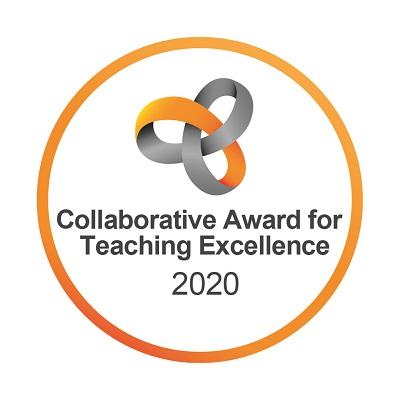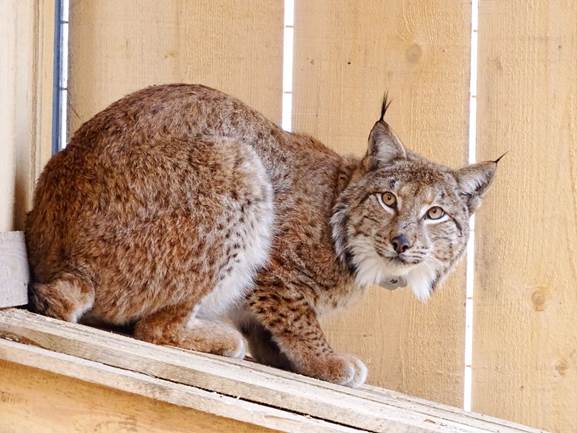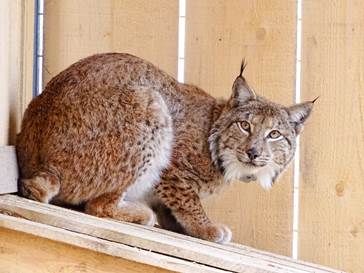Human-Wildlife Interactions Working Group Action Plan and news
Adriana Consorte-McCrea
Dear colleagues
Seasons’ Greetings! (and apologies for duplicated emails…)
This has been an extremely busy year for the group, and it started with the publication of our Guidelines to Facilitate Human-Wildlife Interactions in Conservation Translocations paper (Consorte-McCrea A, Kolipaka S, Owens JR, Ruiz-Miranda CR and Waters S (2022) Guidelines to Facilitate Human-Wildlife Interactions in Conservation Translocations. Front. Conserv. Sci. 3:788520. https://doi.org/10.3389/fcosc.2022.788520).
In 2023 we will be working towards expanding this into an extended Guidance document, populated with case studies from our members, with more background, recommendations an also tools to help practitioners address key issues effectively. This extended Guidance will be the result of feedback collected during 2 workshops:
- 19th October 22: Pathways Europe 2022: Human Dimensions of Wildlife Conference
- 30th March-1st April 23: International Conference on Human-Wildlife Conflict and Coexistence.
We would like to collect case studies from you that may illustrate key issues, recommendations and tools, so we will be in touch about that, counting on your support and input.
The publication of the Guidelines paper was part of a Special issue of the Frontiers in Conservation Sciences, Animal Section "Human Dimensions of Animal Translocations" which is open access via link, with a series of papers that are of interest to our community. Final papers are still going through the editorial process to complete the issue.
This year we have also been busy creating the HWIWG Action Plan 2022-2025, in alignment with the CTSG 2030 Strategy. The Action Plan (attached) states our Vision and Mission, and is structured into 3 key Aims, and their related Objectives, Targets, Actions and Funding Needs, and includes THE HUMAN-WILDLIFE INTERACTIONS WORKING GROUP MANIFESTO. We would like to hear from you about what we are proposing, so that it can be as useful to our community as possible. Please get in touch with your feedback and suggestions.
Some more exciting news… In 2023 we will be contributing to a new conservation platform called Integrative Conservation Clinic, developed by a team from the San Diego Zoo Wildlife Alliance, UCLA, Ben-Gurion University of the Negev. It is a free and open-access online platform that “will feature multidisciplinary and up-to-date information and guidance for conservation decision-making and on-the-ground implementation”. We will be contributing to the topic: Human-Wildlife Interactions, with special focus on Conservation Translocations. This addresses section 3.7 of our Action Plan and also adds to the extended Guidance, as it will focus on applied solutions for the key issues we have identified.
In May 2022 we had the great opportunity to discuss gendered issues in conservation translocations with Dr Upma Manral and Dr Kalli Doubleday in Hidden costs and gender issues in reintroductions and translocations of wildlife. This time we have not been able to prepare a follow up report about the discussion, but the full presentation and discussion can be found here https://youtu.be/2nZF6K5B77M and is really worth watching!
In 2023 we look forward to new events! We are organising a session about communication and education to be led by Vesna Oražem from LIFE Lynx. If you would like to lead a session or recommend a topic or speaker, please get in touch… suggestions and recommendations are always welcome.
In 2023 we are also looking to expand our network and welcoming new colleagues, practitioners and researchers who work with conservation translocations and would like to know more about human-wildlife interactions. So, please feel free to forward this message to your peers.
The HWIWG is a dynamic, pragmatic forum driven by a collective need to promote and share good practice, to find solutions. To do so we want to participate in the wider conservation translocation stage, make our voices heard and considered.
Please find information and resources in our website https://iucn-ctsg-hwi.wixsite.com/workinggroup. You may also join us at https://www.facebook.com/IUCN-CTSG Human-Wildlife Interactions to share news, events, your opinion, notes of interest and photos! Group resources can also be found in Researchgate https://www.researchgate.net/project/IUCN-SSC-RSG-Human-and-Wildlife-Interaction
If you are new to the group or have questions, suggestions or would like to contact us, please send an email to adriana.con...@canterbury.ac.uk, and I’ll be happy to respond.
The HWIWG would like to wish you peaceful holidays and renewed energy and inspiration for 2023. We look forward to hearing from you and maybe seeing you then!
Very best wishes
Adriana and team
Dr. Adriana Consorte-McCrea
Education for Sustainability Lead
Academy for Sustainable Futures
Sustainability Office
Canterbury Christ Church University
North Holmes Road
Canterbury CT1 1QU

IUCN SSC/Conservation Translocation Specialist Group,
Chair of the Human-Wildlife Interactions Working Group
Associate Editor Human Dimensions of Wildlife | Taylor & Francis Online (tandfonline.com)
Fg10, tel: +44 1227 767700 Ext:1607
adriana.con...@canterbury.ac.uk
https://www.researchgate.net/profile/Adriana_Consorte-Mccrea
http://www.linkedin.com/profile/edit?trk=hb_tab_pro_top
http://adrianaconsortemccrea.wordpress.com/
https://iucn-ctsg-hwi.wixsite.com/workinggroup
Human Dimensions of Animal Translocations in Frontiers in Conservation Science.
Find Consorte-McCrea A, Kolipaka S, Owens JR, Ruiz-Miranda CR and Waters S (2022) Guidelines to Facilitate Human-Wildlife Interactions in Conservation Translocations. Front. Conserv. Sci. 3:788520. doi: 10.3389/fcosc.2022.788520 Frontiers | Guidelines to Facilitate Human-Wildlife Interactions in Conservation Translocations | Conservation Science (frontiersin.org)
Find Consorte-McCrea, A., Fernandez, A., Bainbridge, A., Moss, A., Prévot, A-C., Clayton, S., Glikman, J.A., Johansson, M., López-Bao, J.V., Bath, A., Frank, B. and Marchini, S. (2019). Nature Conservation, Pensoft. DOI 10.3897/natureconservation.37.39501 "Large carnivores and zoos as catalysts for engaging the public in the protection of biodiversity”
Find Consorte-McCrea, A., Bainbridge, A., Fernandez, A., Nigbur, D., McDonnell, S., Grent, O., Morin, A., (2017).Understanding attitudes towards native wildlife and biodiversity in the UK: the role of zoos. In Sustainable Development Research at Universities in the United Kingdom, ch 17. Ed. Walter Leal Filho. World Sustainability Series, Springer International. DOI 10.1007/978-3-319-47883-8_17 http://link.springer.com/chapter/10.1007%2F978-3-319-47883-8_17
Find the book The Ecology and Conservation of the maned wolf: multidisplinary perspectives, edited by Adriana Consorte-McCrea and Eliana Ferraz Santos, 2014. CRC Press, London, here:http://www.crcpress.com/product/isbn/9781466512597



Adriana Consorte-McCrea
IUCN/SSC CTSG Human-Wildlife Interaction Working Group
Lynx reintroduction in Eastern Europe: the LIFE Lynx Project, involving hunters, promoting communication and raising awareness.

The HWIWG is very glad to start 2023 with two talks and discussion led by the LIFE Lynx project this coming March. You are invited to join us for a 30 minutes talk focussing on their strategies of communication and awareness raising to involve key interest groups in the reintroduction of the lynx to Eastern Europe, followed by Q&A and an open discussion where participants are invited to exchange ideas drawn from their own practice and/or research. The aim of the event, as in our past events, is to promote an opportunity for the exchange of ideas and for finding solutions for human-dimension issues taking place in conservation translocations.
The first one will take place on Tuesday the 7th of March at 4-5.15 pm (GMT) / 5-6.15 pm (CET) and the second on Tuesday the 14th of March at 4-5.15 pm (GMT) / 5-6.15 pm (CET). These events will be live online on Microsoft Teams and recorded. The links to the online events will be sent near the time.
07. 03. 2023: Saving the lynx from extinction - actively involving hunters in the LIFE Lynx project's conservation activities
Protection activities that do not involve public participation are usually doomed to failure from the outset. In particular, activities to reintroduce species that are already extinct in an area must be based on the participation of key stakeholders and the general public. The Eurasian lynx was once extinct in Slovenia, and hunters have been the main catalysts for its reintroduction. As the population is highly inbred due to the introduction of six animals, the introduction of new genes was urgently needed. In the framework of the LIFE Lynx project, unrelated individuals have been translocated to Slovenia and Croatia and their inclusion in the population will prevent the species from becoming extinct again. The reintroduction of lynx would not have been positively received without the active involvement of hunters in releases communication and, above all, field monitoring activities.
Led by Rok Černe (LIFE Lynx project coordinator at Lead Beneficiary Slovenia Forest Service) and Tilen Hvala (Hunters Association of Slovenia)
14. 03. 2023: Communicate to conserve the lynx – carrying out communication, and science-based activities to raise awareness
Human tolerance is a key factor in the conservation of large carnivores. In Europe, where human settlements and large carnivore habitats are intertwined in a mosaic landscape, the involvement of local communities and key stakeholders (hunters in the case of the Eurasian lynx) is essential. Recognizing the importance of communication, it is carefully planned and integrated into all concrete conservation activities of the LIFE Lynx project. Exploring people's attitudes, their knowledge of the species, and especially the influencing factors, gives good insight into the social acceptance of the species and its dynamics. The LIFE Lynx project uses both a research and an implementation approach to communication. The survey of the views and knowledge of the species by different stakeholders was carried out prior to the planning of the Lynx introduction itself and has provided an important theoretical framework. During the implementation of the project activities, repeated surveys are used to monitor the dynamics of social acceptance and the contribution of the project's communication activities. In parallel, a number of concrete communication and education activities are being carried out to reach as wide an audience as possible: hunters (individual meetings, dissemination at events), local public (local consultative groups), younger generations (preparation of teaching materials and training for teachers, adopt-a-Lynx program for schools), the general public (social media, lectures and presentations, thematic learning trail, art camps).
Led by Maja Sever (LIFE Lynx project communicator, Slovenia Forest Service), Vesna Mihelič Oražem (PhD, project associate, Slovenia Forest Service), Bernarda Bele and Manca Velkavrh (project associates from the University of Ljubljana, Biotechnical Faculty, Department of Biology).
More information, short bios and links to resources are attached!
We are always looking to expand our network and welcoming new colleagues, practitioners and researchers who work with conservation translocations and are interested in human-wildlife interactions. So, please feel free to forward this message to your peers. The HWIWG is a dynamic, pragmatic forum driven by a collective need to promote and share good practice, to find solutions.
Please find information and resources in our website https://iucn-ctsg-hwi.wixsite.com/workinggroup. You may also join us at https://www.facebook.com/IUCN-CTSG Human-Wildlife Interactions to share news, events, your opinion, notes of interest and photos! Group resources can also be found in Researchgate https://www.researchgate.net/project/IUCN-SSC-RSG-Human-and-Wildlife-Interaction
If you are new to the group or have questions, suggestions or would like to contact us, please send an email to adriana.con...@canterbury.ac.uk, and I’ll be happy to respond.
Very best wishes
Adriana Consorte-McCrea
 IUCN/SSC
CTSG Human-Wildlife Interaction Working Group
IUCN/SSC
CTSG Human-Wildlife Interaction Working Group
Lynx reintroduction in Eastern Europe: the LIFE Lynx Project, involving hunters, promoting communication and raising awareness.
The HWIWG invites you to explore the hardships and success of this case study of reintroduction of a large carnivore to Eastern Europe. Talks by project leads will be followed by Q&A and an open discussion where participants are invited to exchange ideas drawn from their own practice and/or research. Please find the link to join this session on Microsoft Teams at the end.
Tuesday the 7th of March at 4-5.15 pm (GMT) / 5-6.15 pm (CET): Saving the lynx from extinction - actively involving hunters in the LIFE Lynx project's conservation activities
Protection activities that do not involve public participation are usually doomed to failure from the outset. In particular, activities to reintroduce species that are already extinct in an area must be based on the participation of key stakeholders and the general public. The Eurasian lynx was once extinct in Slovenia, and hunters have been the main catalysts for its reintroduction. As the population is highly inbred due to the introduction of six animals, the introduction of new genes was urgently needed. In the framework of the LIFE Lynx project, unrelated individuals have been translocated to Slovenia and Croatia and their inclusion in the population will prevent the species from becoming extinct again. The reintroduction of lynx would not have been positively received without the active involvement of hunters in releases communication and, above all, field monitoring activities.
Led by Rok Černe (LIFE Lynx project coordinator at Lead Beneficiary Slovenia Forest Service) and Tilen Hvala (Hunters Association of Slovenia)
See also
Tuesday the 14th of March at 4-5.15 pm (GMT) / 5-6.15 pm (CET): Communicate to conserve the lynx – carrying out communication, and science-based activities to raise awareness
If you have any questions, please send an email to adriana.con...@canterbury.ac.uk, and I’ll be happy to respond.
Very best wishes
Adriana and team
Dr. Adriana Consorte-McCrea
IUCN SSC/Conservation Translocation Specialist Group,
Chair of the Human-Wildlife Interactions Working Group
https://iucn-ctsg-hwi.wixsite.com/workinggroup
________________________________________________________________________________
Microsoft Teams meeting
Join on your computer, mobile app or room device
Click here to join the meeting
Meeting ID:
353 080 724 514
Passcode:
BMCaNV
Download Teams | Join on the web
________________________________________________________________________________
Adriana Consorte-McCrea
The HWIWG invites you to explore the hardships and success of this case study of reintroduction of a large carnivore to Eastern Europe. Talks by project leads will be followed by Q&A and an open discussion where participants are invited to exchange ideas drawn from their own practice and/or research. Please find the link to join this session on Microsoft Teams at the end. Sessions will be recorded and shared later on.
Tuesday the 14th of March at 4-5.15 pm (GMT) / 5-6.15 pm (CET): Communicate to conserve the lynx – carrying out communication, and science-based activities to raise awareness
Human tolerance is a key factor in the conservation of large carnivores. In Europe, where human settlements and large carnivore habitats are intertwined in a mosaic landscape, the involvement of local communities and key stakeholders (hunters in the case of the Eurasian lynx) is essential. Recognizing the importance of communication, it is carefully planned and integrated into all concrete conservation activities of the LIFE Lynx project. Exploring people's attitudes, their knowledge of the species, and especially the influencing factors, gives good insight into the social acceptance of the species and its dynamics. The LIFE Lynx project uses both a research and an implementation approach to communication. The survey of the views and knowledge of the species by different stakeholders was carried out prior to the planning of the Lynx introduction itself and has provided an important theoretical framework. During the implementation of the project activities, repeated surveys are used to monitor the dynamics of social acceptance and the contribution of the project's communication activities. In parallel, a number of concrete communication and education activities are being carried out to reach as wide an audience as possible: hunters (individual meetings, dissemination at events), local public (local consultative groups), younger generations (preparation of teaching materials and training for teachers, adopt-a-Lynx program for schools), the general public (social media, lectures and presentations, thematic learning trail, art camps).
Led by Maja Sever (LIFE Lynx project communicator, Slovenia Forest Service), Vesna Mihelič Oraľem (PhD, project associate, Slovenia Forest Service), Bernarda Bele and Manca Velkavrh (project associates from the University of Ljubljana, Biotechnical Faculty, Department of Biology).
If you have any questions, please send an email to adriana.con...@canterbury.ac.uk, and I’ll be happy to respond.
Very best wishes
Adriana and team
Dr. Adriana Consorte-McCrea
IUCN SSC/Conservation Translocation Specialist Group,
Chair of the Human-Wildlife Interactions Working Group
https://iucn-ctsg-hwi.wixsite.com/workinggroup
________________________________________________________________________________
Microsoft Teams meeting
Join on your computer, mobile app or room device
Meeting ID:
348 955 978 086
Passcode:
BgQVwG
Adriana Consorte-McCrea
Please join us for the second talk of the series on human dimensions of lynx reintroduction to Eastern Europe. Talks by project leads will be followed by Q&A and an open discussion where participants are invited to exchange ideas drawn from their own practice and/or research. Please find the link to join this session on Microsoft Teams at the end of this message. Sessions will be recorded and shared later on.
Adriana Consorte-McCrea
Dear colleagues
We would like to invite you to join our Interactive Session ‘Human-wildlife interactions in conservation translocations’ at the International Conference on Human-Wildlife Conflict and Coexistence, if you are attending the conference. It ill take place on Saturday the 1st of April 14.00-15.30, Room 6:
Reintroductions and rewilding can be powerful tools in biodiversity recovery. We will introduce key Human-Wildlife Interaction issues that take place along the life cycle of a conservation translocation project, from planning to post-exit stages. Participants will be invited to discuss their experiences in HWI related to each of these stages, aiming to expand on findings from the Guidelines to Facilitate Human-Wildlife Interactions in Conservation Translocations (2022) to inform planning and promote wildlife conservation, collaboration amongst groups and coexistence.
Facilitators:
Adriana Consorte-McCrea, IUCN-SSC CTSG HWIWG, UK
Sian Waters, Barbary Macaque Awareness & Conservation, UK
Faye Whiley, University of Kent, UK
The full programme can be found here: https://www.hwcconference.org/Conference-Programme
Other great news: if you missed the two events led by Life Lynx about human dimensions of their reintroduction programmes in Eastern Europe, the recordings are now available!
IUCN/SSC CTSG HWIWG Lynx reintroduction in Eastern Europe: the LIFE Lynx Project, involving hunters, Led by Rok Černe and Tilen Hvala is available to watch here: IUCN/SSC CTSG HWIWG Lynx reintroduction in Eastern Europe: the LIFE Lynx Project, involving hunters - YouTube
IUCN/SSC CTSG HWIWG Communicate to conserve the lynx – carrying out communication, and science-based activities to raise awareness, led by Maja Sever, Vesna Mihelič Oraľem, Bernarda Bele and Manca Velkavrh is available to watch here https://youtu.be/CGFwAU3TaXQ
Robin Rigg
other grey literature, experience, knowledge and other nuggets of
personal wisdom related to measures to protect livestock (sheep or
other) from lynx and their effectiveness (or lack of)?
All contributions appreciated 😄
Best wishes,
Robin
--
Robin Rigg BA MSc.
---------------------------------------
Chief Editor | CDPnews.net
Carnivore Damage Prevention News
---------------------------------------
Predseda / Chairman
Slovak Wildlife Society (SWS)
Spoločnosť pre výskum, vzdelávanie
a spolužitie s prírodou
---------------------------------------
P.O. Box 72, Belanská 574/6
Liptovský Hrádok 033 01 Slovakia
tel. +421-907-446714
---------------------------------------
www.slovakwildlife.org | www.medvede.sk
www.facebook.com/SlovakWildlifeSociety
www.facebook.com/CarpathianWolfWatch
---------------------------------------
